From his office in central Khartoum, Ahmed al-Mufti prepares every day for what he believes is the water war to come.
This conviction led Mufti, a prominent human rights lawyer and water expert, to quit the Sudanese delegation that is negotiating Nile water issues with Egypt and Ethiopia.
He was angry at Ethiopia’s decision to build the Grand Ethiopian Renaissance dam (Gerd), a $4.5bn (GBP3.6bn) mega-project on the Blue Nile river that runs from Lake Tana in Ethiopia to meet the White Nile in Khartoum, flowing up into Egypt. The dam project will affect water levels upstream, depending on how fast Ethiopia fills its 74bn cubic metre reservoir.
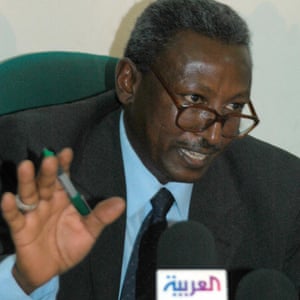
“I believe in one, two, 10 … 100 years, this will cause instability in the region. These are the germs of instability, and it will cause a water war,” he says emphatically. “If not under this government then under another, as no population will see itself dying of thirst when they know that there is water very close by. This was my position when I quit, and every day since then I find more evidence that supports this.”
Ethiopia is due to begin filling the dam’s reservoir later this year, following a decade of fraught negotiations between the Nile Basin countries. In early April, Ethiopia’s prime minister, Abiy Ahmed, declared that construction would be completed despite the challenges of the pandemic, with the reservoir to be filled during the rainy season that starts in June. “Saving lives is our priority, while second to this we have the Gerd,” he told Ethiopians.
Sudan’s prime minister, Abdalla Hamdok, proposed “joint management” of the dam, which will deplete Sudan’s water from the Blue Nile while potentially providing much-needed cheap electricity in future. Further upstream, however, Egypt has long seen the Gerd as an existential threat that could deprive its 100 million people of the water they need to survive in a changing climate. Some Egyptian officials have even discussed bombing the dam.
Ethiopia and Sudan say the dam’s hydropower is essential for their citizens to develop and thrive.
Mufti fingers prayer beads as he talks: “I believe that within one year of the filling of the dam’s reservoir, shortcomings will start to appear,” he says. “This dam is endangering rights – the right to life and the right to work.”
He also fears the dam itself risks collapse. “There will be a shortage of water, and a lack of safety of the dam abrogating [the] human right to life of the Sudanese people.”
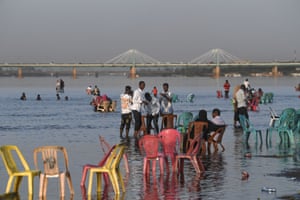
Mufti left Sudan’s delegation to the talks in 2010 after Ethiopia declared it would continue building. Now, in addition to his human rights work, he spends his days touring farming communities to warn them of the risks of the Gerd and working on a newsletter that follows dam developments in minute detail. He has written several books on the subject. “This one is intended as a record, so that when things go wrong I can say the information was there,” he says, pushing a paperback over his large desk.
In January, the tense discussions between the three nations came to a head in Washington. US-mediated talks had secured a preliminary agreement between the trio, including an understanding that a staged filling process would be undertaken in the wet season. The three countries also said they needed to reach agreement on the later stages, not least on the thorny issue of how to manage during dry times. Much depends on the Blue Nile, which has been impacted by the changing climate.
When Egypt and Sudan returned to Washington to negotiate and sign the final deal in February, Ethiopian negotiators declined to attend, stating that more time was needed to deliberate. The US secretary of state, Mike Pompeo, said a final agreement on the dam could take “months” to resolve.
Ethiopia’s position fuelled an escalating war of words. Egypt accused Khartoum of “intent to exercise hydro-hegemony”, raising the issue with the Arab League and Donald Trump. Ethiopia claimed the US president had “inaccurate and inadequate information” about the issue, while Egypt’s foreign minister conducted a Middle East tour to rally support. Egypt has repeatedly tried to win Sudan over to its position on the dam, even taking steps to end a decades-long border dispute.
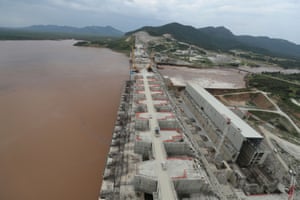
Sudan hopes the dam will provide cheap electricity, and has long attempted to strike a balance between Egypt and Ethiopia, attending talks in Washington but declining to sign an Arab League statement condemning Ethiopia. Mufti has seen Sudan’s stance as a fool’s errand, pointing to a declaration of principles signed by the three nations in 2015.
“What this says is that if there is excess, if, then downstream countries like Sudan will get priority to buy it! If!” he says furiously. “No specific quantity, no prices, nothing – if! And the potential generation is expected to be 6,000 megawatts when this was written down, but initially engineers are saying production won’t exceed 2,000, so there will never be excess. If there’s an excess, this will be sold at regular prices – and right now Egypt is giving Sudan electricity.”
Mufti believes that, in the end, regional politics has won, and Sudan has been sold a lie of cheap power. “This is what has been sold to the Sudanese people – it’s not true.”
Dry lands
On the bank of the Blue Nile, farmer Abdullah Ali points at the river. The water doesn’t cover the riverbed, exposing a wide streak of brown sandy earth. Ali has extended a pump from his dry farmland to catch some of the river water closest to the bank, but soon he will have to extend it much further.
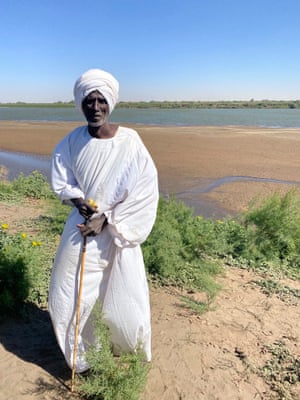
“The water level is down – even today,” he says. He is 65 and has been a farmer for his entire adult life, but this is new. “It’s never been this bad before. Last year at this time, the water was plentiful.”
The Blue Nile offers a terrifying picture of the climate crisis – not just for Sudan’s water resources but for the entire region. Ali walks over cracked soil as he points at the remaining crops with his cane, his long white robe billowing in the winds.
As Sudan, Egypt and Ethiopia argue over the Nile Basin’s waters, the climate crisis is encroaching. Ali wants the river to sustain his crops, which this year featured much more alfalfa because it can be grown in dry areas. But this meant fewer profits; alfalfa does not generate as much profit as the tomatoes and okra he sells in Khartoum. The lack of water also meant money was needed for a diesel-powered pump for irrigation.
He knows the exposed riverbed means that communities upstream will see drought. The water levels were so low, he was convinced that the Ethiopian authorities had begun filling the dam’s reservoir, decreasing the flow to the Blue Nile. “I think the dam is affecting us here,” he says, repeating the fears of other local farmers.
The lack of water is already displacing people. “I know farmers who have given up their land and have moved to work with others who can afford pumps,” says Ali, who fears the same fate if he can’t keep up with the increasing costs. “We have never been tired like this year. With this amount of water, how can I farm? We don’t go to the government for the solution,” he says bitterly.
Further up the bank, cotton farmer Hassan Khallafallah was proud of this year’s crop, but worried about next year. His fields of cotton rustle in the wind, with fluffy white buds stretching up to the clear blue sky.

“I’m worried for Sudan,” he says. “Right now, I’m not affected [by the lack of water], but in future I will be.” He is concerned about the Gerd the progress of which he has followed closely in the news.
Khallafallah has already noticed shifting weather patterns and lower water levels in the irrigation channels. On the banks of the main channel that supplies water to his fields, he says: “You see – there’s less water in the channel. We expect that after April, there just won’t be enough.”
Khallafallah has been buoyed by Sudan’s transition to democracy, and says he would like to push the government on the issue of water in future. “This is a problem for the irrigation ministry. I would go to Khartoum to talk to them.”
Hydropower
Yet Sudan’s Gerd negotiator, Salih Hamad Hamid, of the Ministry of Irrigation and Water Resources, is confident the country can handle some loss of water resources while reaping the benefits of cheap hydropower.
“Sudan seeks to secure its water rights and achieve optimal benefit from the shared Blue Nile waters. The Sudanese proposal optimises the power generation from the Gerd – Ethiopia’s objective – and minimises harm during filling and operation to both downstream countries of Sudan and Egypt,” he said in a statement to the Guardian.
Hamid stressed that the countries had “agreed on a filling timetable of seven stages. This can increase or decrease from seven years”, according to drought and water levels, lengthening the timetable if the water levels of the Blue Nile are lower than average.
A shared filling timetable is needed because the dam will create a reservoir twice the size of the Hoover Dam’s Lake Mead, the largest reservoir in the US, decreasing the flow of the Blue Nile by up to 25% and potentially decreasing the power of Egypt’s Aswan dam.
While the preliminary agreement mentions potential dry periods, there has been extraordinarily little mention of climate change, an undeniable threat to water resources.
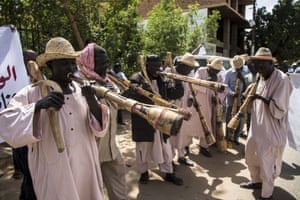
Sudanese supporters of the dam say the annual rainy season that helps the Nile flood provides more than enough water. In their eyes, the Blue Nile and Sudan have water to spare, which could be traded for hydro electricity.
But studies show that Nile Basin countries will be subject to longer dry periods. Scientists from the American Geophysical Union have warned that, “despite projected increases in regional precipitation due to climate change, the frequency of hot and dry years is likely to also rise due to warming. These increased hot and dry extremes will stress regional agriculture, and coupled with rapid population growth, they will exacerbate water scarcity across the Upper Nile Basin in the coming decades”.
Two of those scientists, Ethan Coffel and Justin Mankin, have sounded the alarm about how people are at risk. “At present, around 10% of the basin’s population faces chronic water scarcity due to the region’s seasonal aridity and highly unequal distribution of water resources,” they said. Water is already a scarce resource in parts of Darfur and other desertified areas of Sudan, with conflict over the precious resource potentially exacerbated by climate change.
They warned that by 2040, up to 35% of those living in the Nile Basin countries could be facing water scarcity. “That’s more than 80 million people without enough water to function in their daily lives,” they said.
On the Fenti Golf course just outside Khartoum, concerns about water resources appear distant. Sprinklers spray the turf, which is surrounded by verdant flower beds, and date palms ring artificial lakes filled with carp and topped off with several fountains.
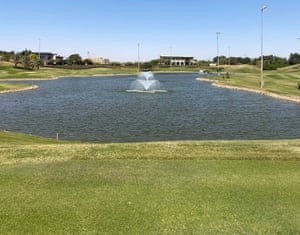
“These are all drains, so any surplus water goes straight into the water table,” says owner Osama Daoud Abdellatif, pointing to a grate in the grass across the 120-acre course. He is Sudan’s most famous tycoon, and he supports the Gerd project.
As our golf buggy splashes through puddles on the paths around the course, he points to areas earmarked for exclusive housing. Abdellatif declined to say how much water his course uses, insisting the vast majority of water is recycled.
“Look at the amount of water and the impact of having a green area. I mean, why do people keep forests? This is the lung of the city. Cities would choke up if there were no green areas,” he says.
But for Ahmed al-Mufti, and the farmers keeping a watchful eye on the ebbing river waters, the threat is one far bigger than Khartoum’s golf courses.